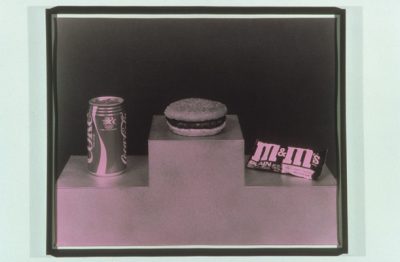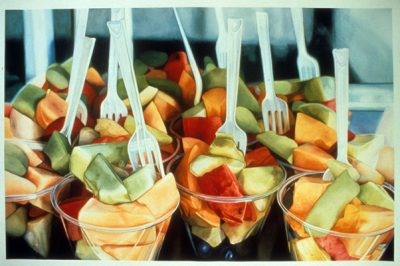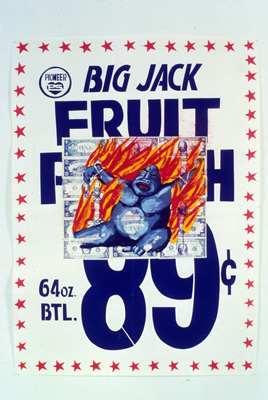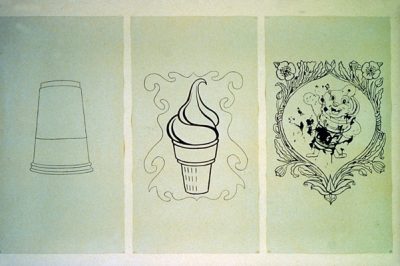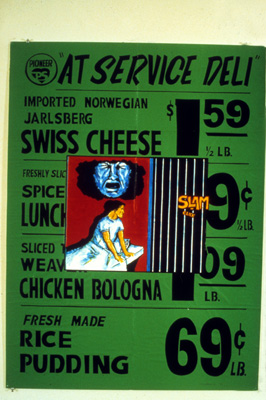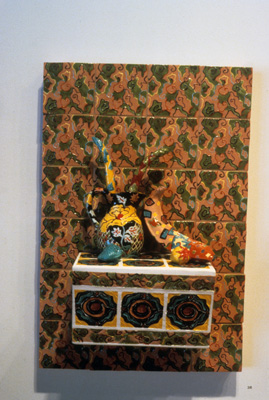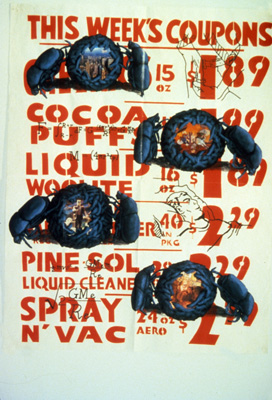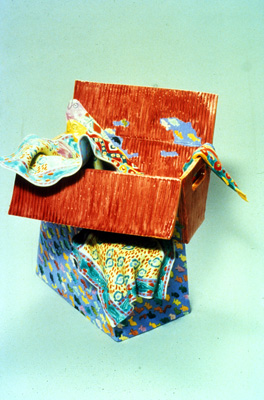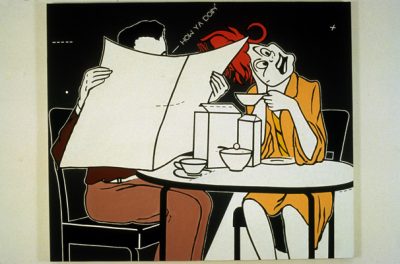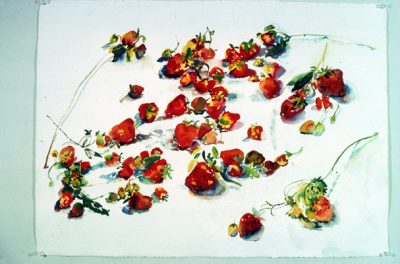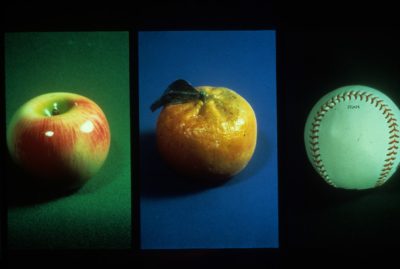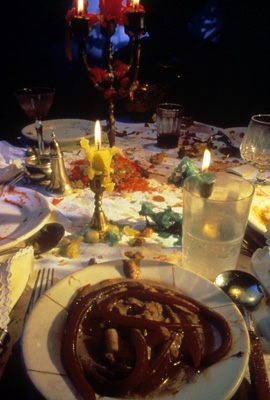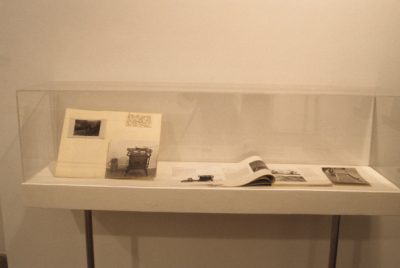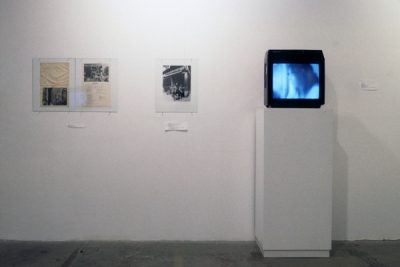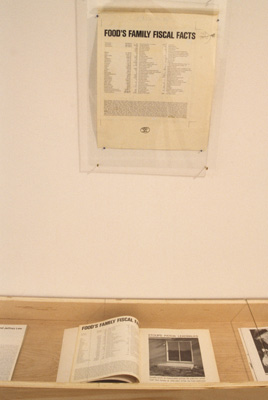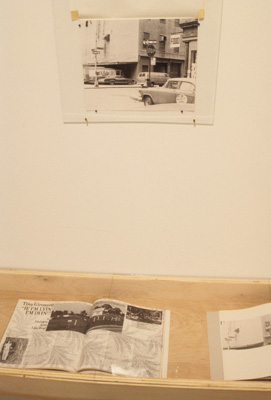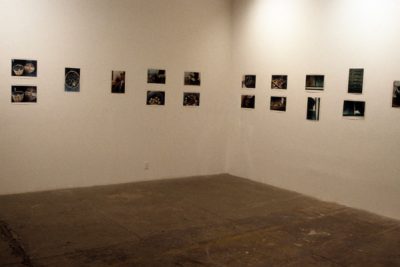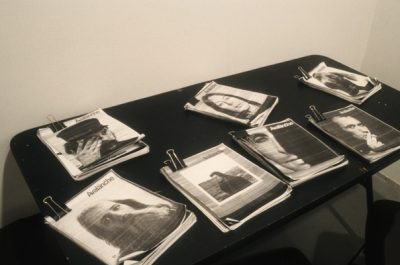Exhibitions
ABOUT THE EXHIBITION
…Pollock, as I see him, left us at the point where we must become preoccupied with and even dazzled by the space and objects of our everyday life, either our bodies, clothes, room, or, if need be, the vastness of Forty Second Street. Not satisfied with the suggestion through paint of our other senses, we shall utilize the specific substances of sight, sound, movements, people, orders, touch. Objects of every sort are materials for the new art: paint, chairs, food, electric and neon lights, smoke, water, old socks, a dog, movies, a thousand other things which will be discovered by the present generation of artists. Not only will these bold creators show us, as if for the first time, the world we have always had about us, but ignored, but they will disclose entirely unheard of happenings and events, found in garbage cans, police files, hotel lobbies, seen in store windows and on the streets, and sensed in dreams and horrible accidents. An odor of crushed strawberries, a letter from a friend or a billboard selling Drano; three taps on the front door, a scratch, a sigh or a voice lecturing endlessly, a blinding staccato flash, a bowler hat – all will become materials for this new concrete art.
The young artist of today need no longer say “I am a painter” or “a poet” or “a dancer,” He is simply an “artist.” All of life will be open to him. He will discover out of ordinary things the meaning of ordinariness. He will try not to make them extraordinary. Only their real meaning will be stated. But out of nothing he will devise the extraordinary and then maybe nothingness as well. People will be delighted or horrified, critics will be confused or amused, but these, I am sure, will be the alchemies of the 1960s.
-Allan Kaprow, “The Legacy of Jackson Pollack,” 1958
… We were thinking about metaphoric void, gaps, left over space, places that were not developed…For example, the places where you stop to tie your shoelaces, places that are just interruptions in your daily movements. These places are also perceptually significant because they make a reference to movement space.
-Gordon Matta-Clark in a discussion, The Anarchitecture Show at 112 Greene Street, NY. March 9-20, 1974
Food was a documentary exhibition that aimed to convey a sense of the time, place, and work made by a group of artists who helped create the vital arts community later known as SoHo. Gordon Matta-Clark, Caroline Goodden, Tina Girouard, Suzanne Harris and Rachel Lew were five members of a community of like-minded people, who lived and worked in the loft spaces of lower Manhattan in the late 1960s and early 1970s. In order to support themselves, show their work, and document their activities, these artists – dancers, poets, musicians, performers, film-makers, photographers, sculptors, and painters – established a self-sustaining network which included Food restaurant, Avalanche magazine, and the performance and exhibition space 112 Greene Street/112 Workshop. This space, the longest-lived of the three endeavors, would be renamed White Columns in 1980; it still exists today in New York and serves as an important venue for exhibiting the work of emerging artists. The combined energy of these enterprises supported, documented, and exhibited a group of artists whose performative, and often deliberately impermanent work, developed in the shadow of Minimalism and Pop.
Food restaurant opened at 127 Prince Street, on the comer of Wooster and Prince Streets, in the fall of 1971 with a meal consisting of garlic soup and bread. With an initial investment by Caroline Goodden and the labor of many others, the project was, on a pragmatic level, very simple: it was a business, it was a restaurant. At the same time, however, Food was a conceptual idea formed by the ongoing creative interests of its founders. As Goodden recounted, “I did it to create a means to a make a living for my artist friends, and it did do that for three years; I did it to have a meeting place for the wonderful collection of exciting minds which had gravitated to SoHo; I did it to make a place to have creative and imaginative food, a place to eat, convene, play – a great big kitchen/living room, and I think Gordon, Tina, and I were successful in doing just that.” As a community-based business, a performance site, a meeting ground, an exhibition space, and a project that helped define the early character of those blocks below Houston Street, yet to be named Soho, Food exemplified an approach to art making practice that was unique to the spirit of the time.
In an interview Matta-Clark described the beginnings of the project: “One of the earliest times I can remember using cuttings as a way of redefining space was at Food restaurant, set up in the early days of Soho—long before the influx of boutiques and bars which now congest the area. We would put on shows and create food theater…This was perhaps the last time I ever used cutting, the cutting process, in a pragmatic way.” The cut architectural elements extracted from Food were exhibited in October 1972 at 112 Greene Street.
A list of people working in the community included not only visual artists, but also dancers, musicians, and performers. As Goodden related in an interview: “I designed menus, the recipes. Richard Peck made music while washing dishes. Barbara Dilley designed scrumptious salads during the day and danced at night. Rachel, Tina, Joanne Akalaitis, Joel Shapiro, Ned Smythe, Bob Kushner and I cooked… Mark de Suvero wanted to serve his meals through the window with a crane (that never happened)…”
The exhibition included never before seen video transfers of films made by Gordon Matta-Clark with Robert Frank, Suzanne Harris, and others, as well as a variety of printed matter and photographic documentation, including brochures, promotional flyers, issues of Avalanche magazine, taped conversations between artists, and photographic documentation of installations.
This exhibition was organized by White Columns.
ARTISTS
Tina Girouard, Caroline Goodden, Suzanne Harris, Rachel Lew, and Gordon Matta-Clark.
SUPPORT
Catherine Morris, exhibition curator; Karen Indeck, Diector of Gallery 400; and Paul Ha, Director of White Columns would like to thank the following people for their assistance in making this exhibition possible:
Jane Crawford and Bob Fiore; Caroline Goodden; Tina Girouard; Rober Kushner; C. Andrew Sarchiapone; Rhona Hoffman/Rhona Hoffman Gallery, Chicago; Gilbert and Lila Silverman; Jon and Joanne Hendricks; Liza Bear; Steven Vitello and Laurie Zippay/Electronic Arts Intermix, New York; Lance Fung/Lance Fung Gallery, New York; Frank Gillette; Dara Meyers Kingsley/Vidipak, New York; Craig Smyth/Cody Color, New York; Glen Walls; Eva Lundsager; Tom MacGregor; Lauren Ross; Willoughby Sharp; Sam Stevens; and David Zwirner Gallery, New York.
Source material for much of the information and quotes included in the wall texts that accompany this exhibition were originally published in the following publications:
Bretano, Robyn with Savitt, Mark, editors. 112 Workshop/112 Greene Street. New York, New York University Press, 1981.
Diserens, Corinne. Gordon Matta-Clark. Valencia, Spain: IVAM Centro Julio Gonzalez, 1992.
Jacob, Mary Jane. Gordon Matta-Clark: A Retrospective. Chicago: Museum of Contemporary Art, 1985.


